Have you ever stopped to think about how far we’ve come in terms of medical knowledge and treatments? It’s amazing how advanced our understanding of the human body and medicine has become in recent years. But, as with anything else, it took a lot of trial and error to get where we are today. Let’s take a trip back in time and explore some of the most bizarre and strange medical practices used in the past. You might be surprised (and perhaps a little grossed out) by the things our ancestors considered “medicine.”
As we journey through history, we’ll uncover some truly mind-boggling treatments that doctors and healers once used to “cure” various ailments. From baffling to downright terrifying, these medical practices will make you grateful for living in the era of modern medicine. These practices often seem odd or even barbaric to modern audiences, but they were developed in a time when medical knowledge was limited, and superstition often prevailed. From using leeches to bloodletting, the methods used by healers and physicians in the past can be both fascinating and horrifying. While many of these practices have been abandoned in favor of more effective treatments, they offer a unique glimpse into the evolution of medical knowledge and the ways in which cultures have attempted to heal their sick and injured throughout history.
This journey through the strange and curious world of medical history will not only leave you in awe of human ingenuity but also make you appreciate the incredible progress we’ve made in recent years.
#1 Vin Mariani
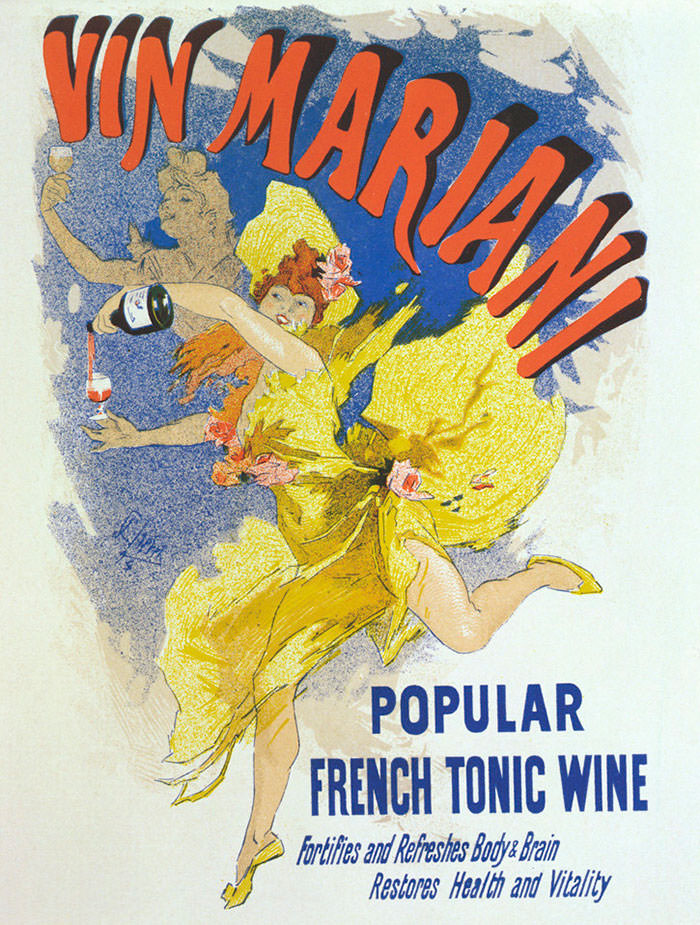
Vin Mariani, introduced in 1863, was a tonic that garnered widespread popularity as both a wine and a cure-all remedy for a wide range of ailments. The product became a sensation, receiving endorsements from famous personalities of the time, such as the Pope and Thomas Edison. The immense success of Vin Mariani even served as an inspiration for the invention of Coca Cola.
The secret behind Vin Mariani's appeal and success lay in one of its key ingredients: cocaine. The tonic contained approximately 6 mg of cocaine per fluid ounce of wine, which provided users with a stimulating and euphoric effect. At the time, the negative consequences and addictive nature of cocaine were not fully understood, and it was considered a useful ingredient in various medicinal products.
As the harmful effects of cocaine became more widely recognized, attitudes towards products like Vin Mariani shifted, and the use of cocaine in medicinal tonics and beverages eventually became regulated and prohibited. Today, Vin Mariani serves as a fascinating example of how cultural attitudes and medical understanding can dramatically change over time, shaping the way we view and use certain substances in our everyday lives.
#2 Sitting Inside A Rotting Whale Carcass

In the 19th century, people sought various unconventional treatments for common ailments, one of which was a peculiar remedy for rheumatism practiced along Australia's southern coast. This peculiar treatment involved sitting inside a rotting whale carcass for a duration of 30 hours. The belief was that this experience would provide relief from joint aches and pains for up to a year.
Although the idea of sitting inside a decomposing whale carcass may seem absurd today, it highlights the desperate measures people were willing to take in search of relief from their ailments. At the time, scientific knowledge and understanding of medical treatments were limited, which often led to the adoption of unconventional and unproven therapies.
#3 Methamphetamine
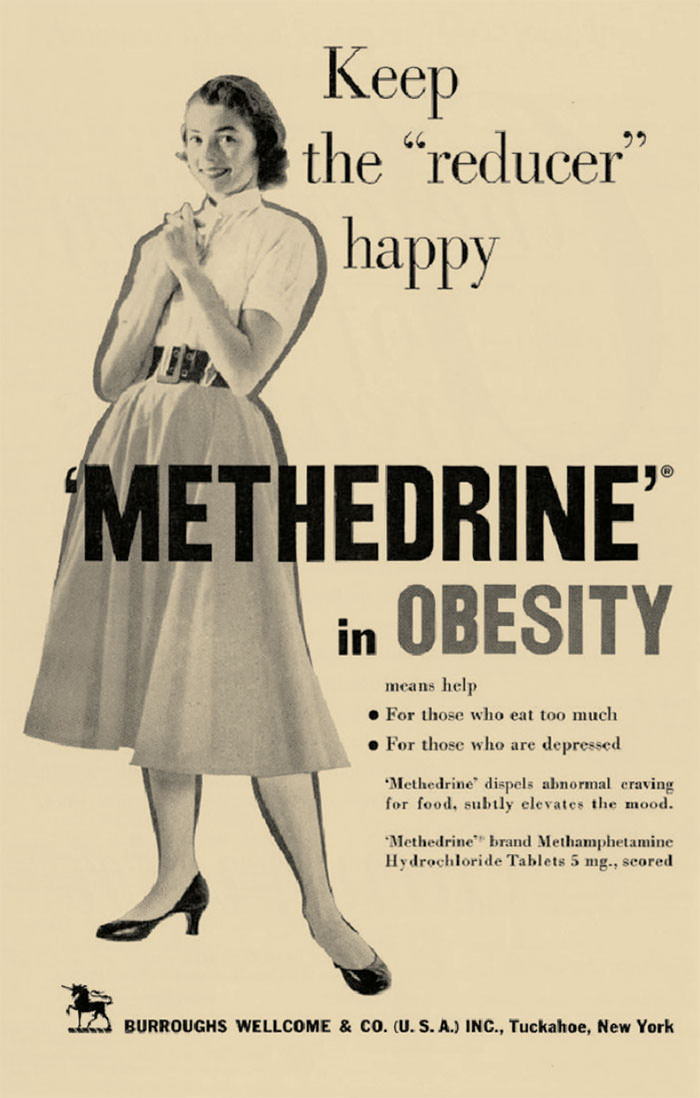
Methamphetamine, first synthesized by a Japanese chemist in 1893, was initially used for medicinal purposes before the adverse effects of the drug were fully understood. In its early years, methamphetamine was prescribed to treat various ailments, including narcolepsy, asthma, and even as a weight-loss aid.
The drug was believed to help with narcolepsy by promoting wakefulness and alertness, while its stimulant properties were thought to provide relief for asthma sufferers by opening up the airways. As a weight-loss drug, methamphetamine was known to suppress appetite and increase metabolism, making it an attractive option for those looking to shed extra pounds.
However, as the use of methamphetamine became more widespread, the dangerous side effects of the drug began to surface. Over time, it became clear that methamphetamine use led to addiction, severe physical and mental health issues, and various social problems. Recognizing these risks, medical professionals and regulatory authorities took steps to limit and eventually eliminate the use of methamphetamine for medicinal purposes. Today, methamphetamine is classified as an illegal substance in many countries, with its use and distribution strictly controlled due to the significant health and social risks associated with the drug.
#4 Tapeworm Diet
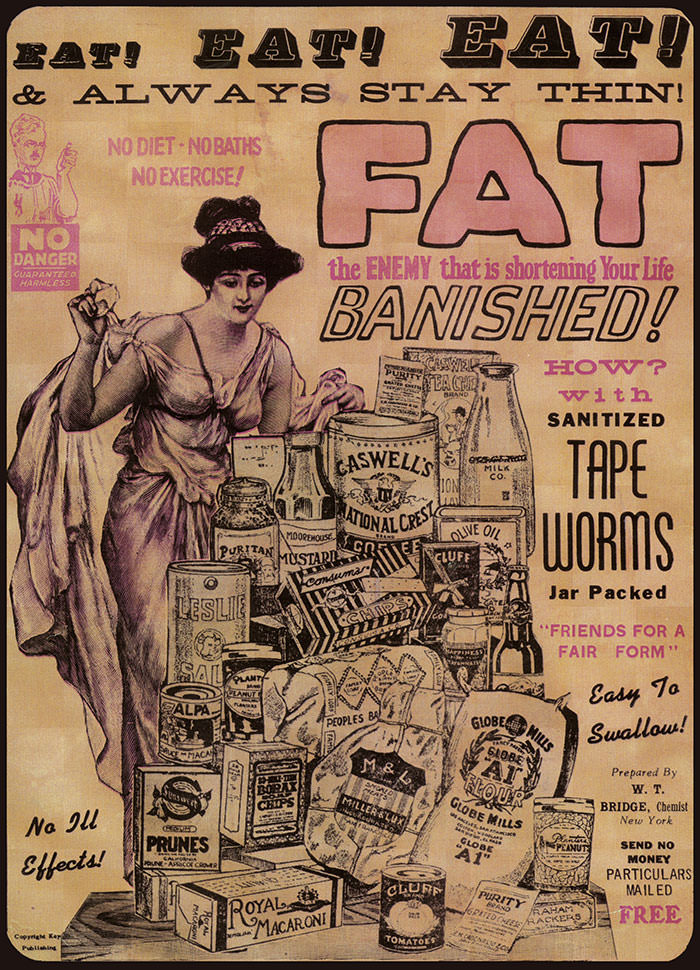
In Victorian times, a radical weight loss solution emerged, known as the tapeworm diet. The concept behind this unusual practice was straightforward: a person would consume a tapeworm egg, which would then hatch and grow inside their intestines. As the parasite developed, it would begin to consume the food that the person ate, allowing the individual to lose weight without reducing their food intake.
Though the idea may have seemed appealing to some, the tapeworm diet came with a host of potential health risks. Tapeworms can cause abdominal pain, diarrhea, fatigue, and vitamin deficiencies. In more severe cases, tapeworms can lead to complications such as organ damage or even death. As medical knowledge and understanding of the risks associated with tapeworms evolved, this practice became widely discouraged.
#5 Radium Water
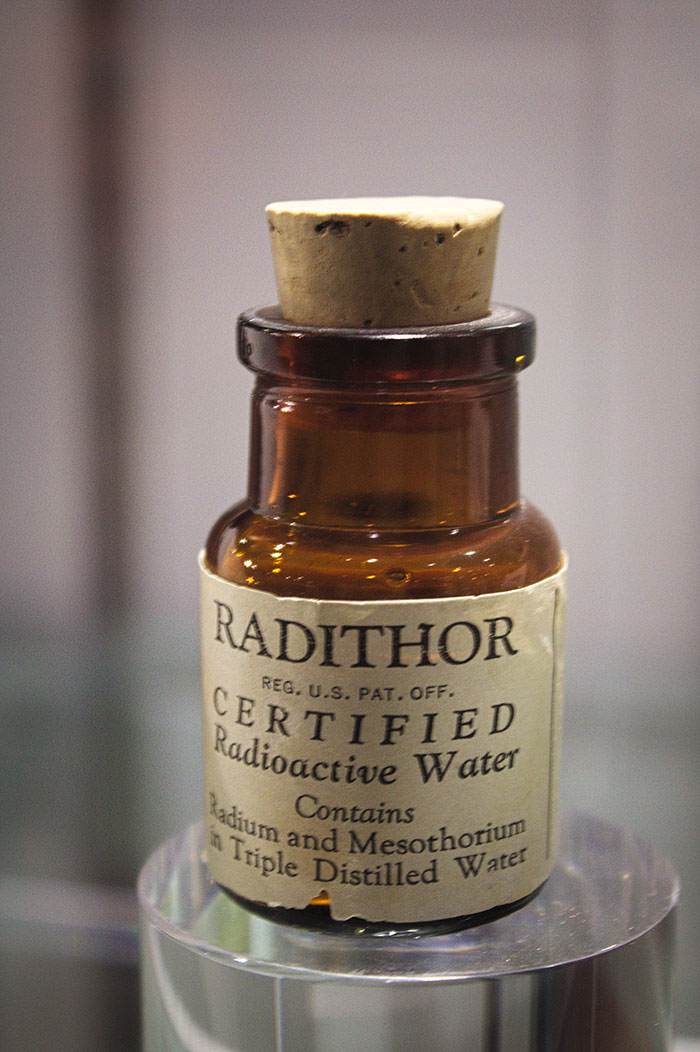
Energy drinks have been around for nearly a century, but the ingredients and formulations have changed significantly over time. In the 1920s, energy drinks were far from being considered healthy alternatives to today's caffeine and taurine-laden beverages. One notorious example was RadiThor, which contained real energy in the form of radium.
RadiThor was developed by William J. A. Bailey, a Harvard dropout with no medical background. The drink consisted of radium dissolved in water and was marketed with catchy slogans such as "A Cure for the Living Dead" and "Perpetual Sunshine." These slogans aimed to convince consumers that RadiThor was a miracle tonic capable of providing boundless energy and vitality.
At the time, the harmful effects of radiation exposure were not well-understood, and radium was believed to possess health benefits. As a result, products containing radium, such as RadiThor, gained popularity among those seeking a quick energy boost.
#6 Mercury
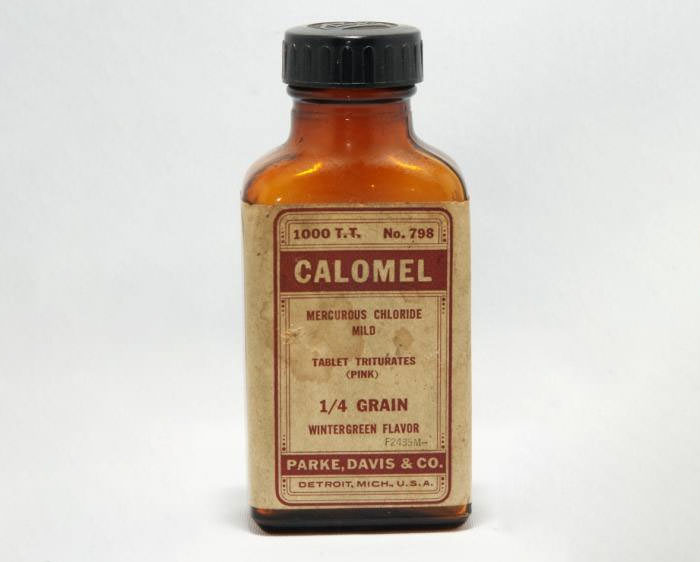
Throughout history, mercury has been used for various medicinal purposes, despite the serious health risks associated with it. In modern times, we understand that exposure to mercury can have severe consequences, including damage to internal organs like the lungs and kidneys, and in some cases, can even be fatal. Ingestion of inorganic mercury salts can also lead to kidney toxicity.
Nevertheless, for several hundred years, mercury was believed to have life-prolonging and health-enhancing properties. It was a key ingredient in numerous products and treatments for a wide range of diseases, such as melancholy, syphilis, and influenza.
One notable example of mercury use was in the treatment of syphilis, which was a widespread and often deadly disease before the advent of antibiotics. Mercury was applied topically, ingested, or even vaporized and inhaled as a treatment, despite the significant risks to the patient's health.
#7 Trepanation
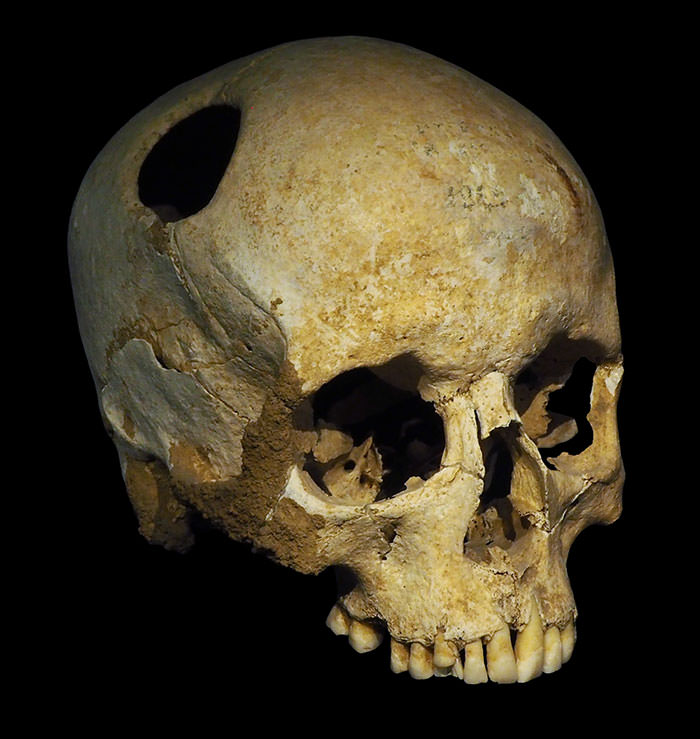
Trepanation, an ancient practice involving drilling, cutting, or scraping holes into a person's skull, has been around since prehistoric times, making it one of the oldest surgical procedures known to mankind. The true purpose behind our ancestors performing trepanation remains unclear, with various theories suggesting it may have been used to treat headaches, epilepsy, or even as part of spiritual rituals.
In Western medicine, trepanation was utilized up until the 19th century as a means of treating head traumas, such as skull fractures or brain swelling. The idea was that creating a hole in the skull could relieve pressure on the brain or allow for the drainage of blood or other fluids that might have accumulated due to injury.
#8 Crocodile Dung

The Ancient Egyptians were indeed quite innovative in their approach to preventing unwanted pregnancies. One such method involved inserting crocodile dung into the vagina as a form of contraception. It is believed that the Egyptians may have thought that the dung would create a barrier to block sperm or that its alkaline properties might have been effective in killing sperm.
However, it is unclear whether this method actually worked as a reliable contraceptive. What is clear, though, is that the use of crocodile dung was unhygienic and potentially dangerous. Introducing a foreign and unsanitary substance into the vagina could have led to infections, irritation, or other health issues.
#9 Dead Mouse Paste

Dead mouse paste is an ancient Egyptian remedy that was used to treat toothaches. As effective pain medication had not yet been invented, people tried various methods to alleviate their suffering, some of which were less than pleasant or effective.
In this case, Egyptians would create a paste by mashing dead mice and mixing them with other ingredients. This concoction would then be applied to the aching tooth in an attempt to ease the pain. As one might expect, this method was far from effective and often led to further complications, such as infections.
#10 Kellogg’s Corn Flakes

J.H. Kellogg, the man responsible for the well-known Kellogg's cereal brand, was not only a medical doctor but also a passionate health activist. He held strong beliefs about the connection between diet and overall well-being, which led to the creation of Kellogg's Corn Flakes. Surprisingly, these famous corn flakes were initially designed to prevent sexual urges, specifically to discourage the act of masturbation.
During the 19th century, masturbation was considered sinful and detrimental to one's health. Dr. Kellogg believed that a healthy, bland diet could help combat these urges and promote overall physical and moral well-being. As a result, he developed corn flakes as a breakfast option that aligned with his beliefs about nutrition and its effects on human behavior.
#11 Tobacco Smoke Enemas
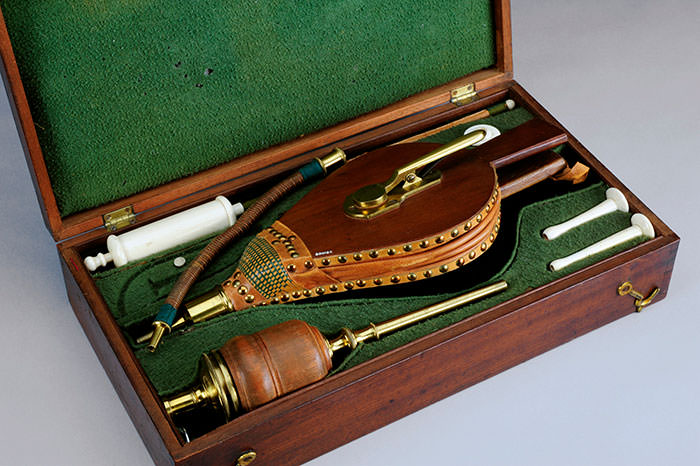
In the 18th century, tobacco smoke enemas were a widely used medical treatment for a variety of ailments. This unusual procedure involved blowing tobacco smoke into a patient's rectum using a tube.
Practitioners of the time believed that the nicotine in the tobacco could stimulate a patient's adrenal glands and produce adrenaline, which would help to revive them from conditions such as respiratory failure, abdominal cramps, or even typhoid fever and cholera.
Despite its widespread use, the tobacco smoke enema was highly ineffective, and there is little scientific evidence to support its use as a medical treatment. Moreover, the procedure carried numerous health risks, including burns, infections, and the possibility of perforating the rectum.
#12 Smoking
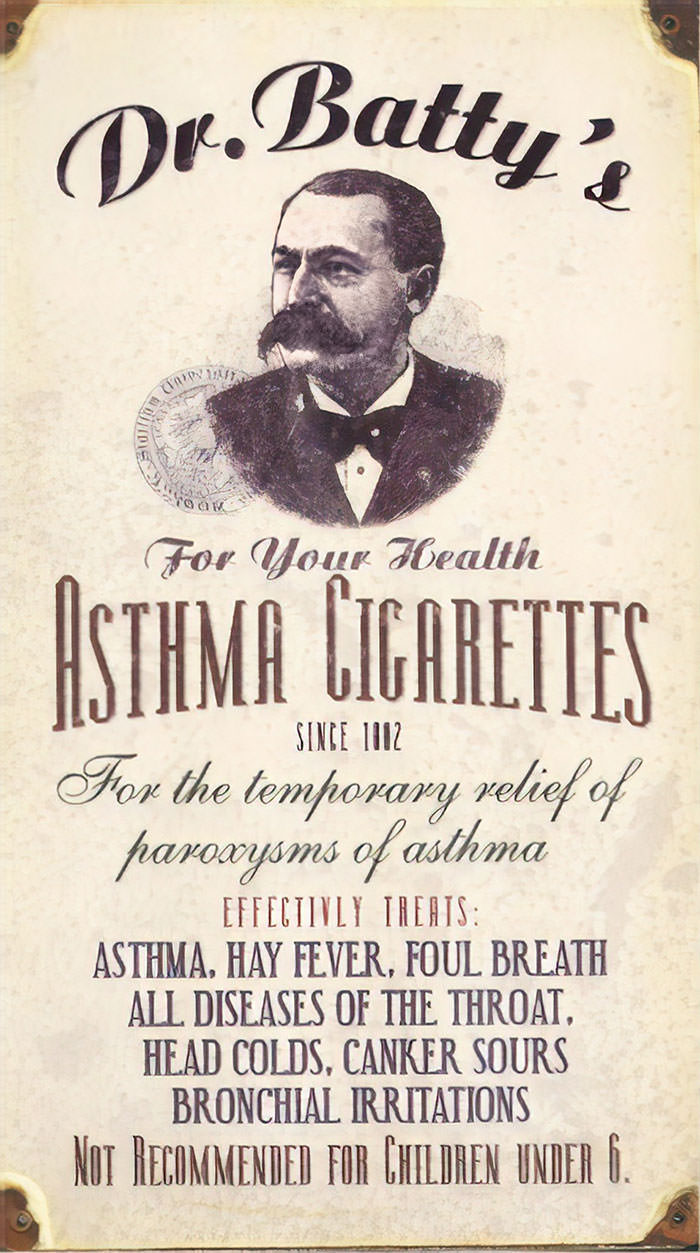
In the late 19th and early 20th century, smoking was considered a treatment for various ailments, including asthma. At that time, the harmful effects of nicotine were not yet fully understood, and smoking was even promoted for its supposed health benefits. Doctors believed that inhaling tobacco smoke could help open up the airways and ease respiratory issues. Cigarettes were marketed as "asthma cigarettes" and were readily available at pharmacies, with some even claiming to be specially formulated for asthmatics.
During this era, smoking was also thought to alleviate symptoms of other respiratory issues, such as bronchitis and coughs. Tobacco smoke was even recommended as a disinfectant to purify the air in hospital wards and sick rooms. The tobacco industry played a significant role in promoting these beliefs, using advertising campaigns that featured doctors and other medical professionals endorsing smoking for health reasons. It wasn't until later in the 20th century that the dangerous effects of smoking on health became widely recognized, and the practice of using cigarettes as a medical treatment was eventually abandoned.
#13 Heroin
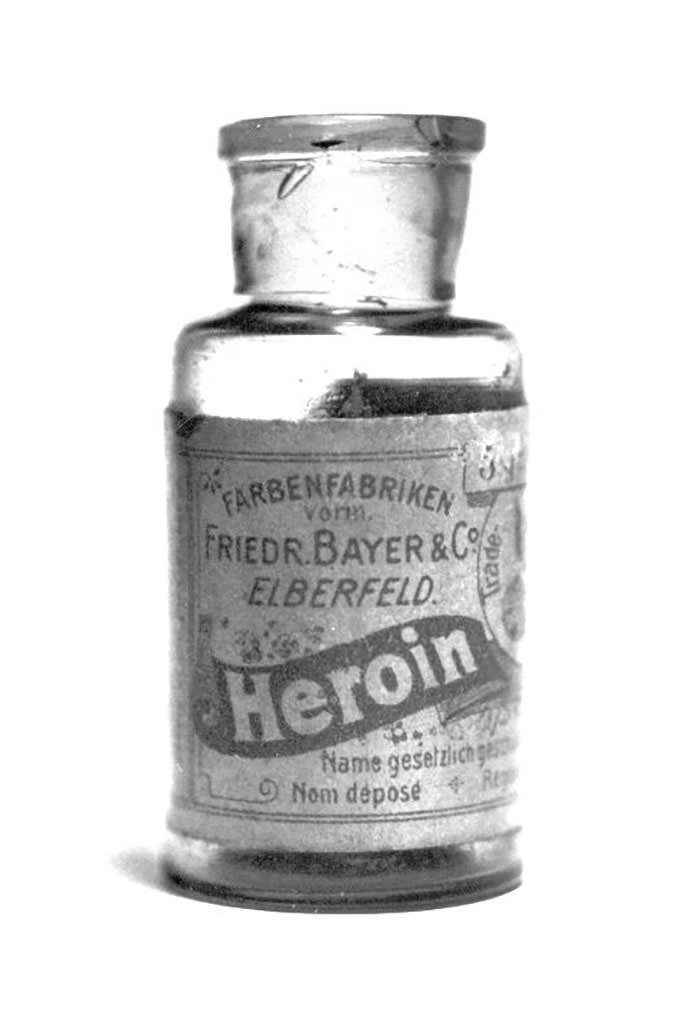
Heroin was first synthesized in the late 19th century during an attempt to create a less potent and less addictive alternative to morphine. However, the result was a substance that was approximately two times more potent than morphine itself. Despite its highly addictive nature, heroin was initially embraced by the medical community and prescribed for various ailments, including coughs, back pain, and insomnia.
From 1898 to 1910, heroin was marketed as a non-addictive morphine substitute, and it was even used as an ingredient in cough syrups. The drug was believed to alleviate symptoms more effectively than other treatments available at the time, and it quickly gained popularity. Pharmaceutical companies advertised heroin as a safe and effective remedy, making it easily accessible to the general public.
#14 Iron Lungs
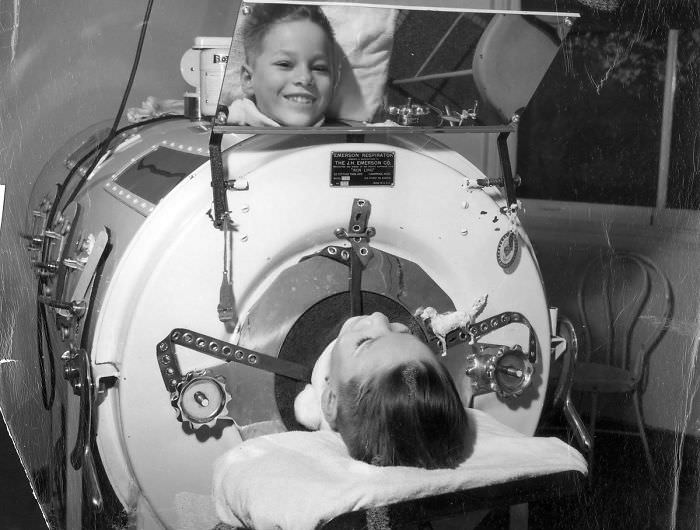
During the height of the polio epidemic in the early to mid-20th century, before the development of an effective vaccine in the 1950s, one of the most successful yet intimidating treatments for those affected by the disease was the iron lung. In 1952, the United States witnessed a peak of 57,628 polio infections, making it one of the most feared diseases of that time.
The iron lung was a large, metal, coffin-like cabinet designed to assist patients who could not breathe independently as a result of chest muscle paralysis caused by polio. The device worked by creating a vacuum around the patient's chest, which would cause their lungs to expand and fill with air. When the vacuum was released, the patient's lungs would naturally contract, allowing them to exhale. This process enabled the iron lung to effectively "breathe" for the patient.
Although the iron lung was a life-saving treatment for many polio sufferers, it was also a daunting prospect. Patients would have to remain inside the cabinet for weeks, months, or in some cases, their entire lives. Despite the intimidating nature of the device, the iron lung played a crucial role in saving thousands of lives during the polio epidemic. With the introduction of the polio vaccine, the need for iron lungs has significantly diminished, but they remain an important reminder of the advances in medical technology and the challenges faced during that era.
#15 Lobotomy
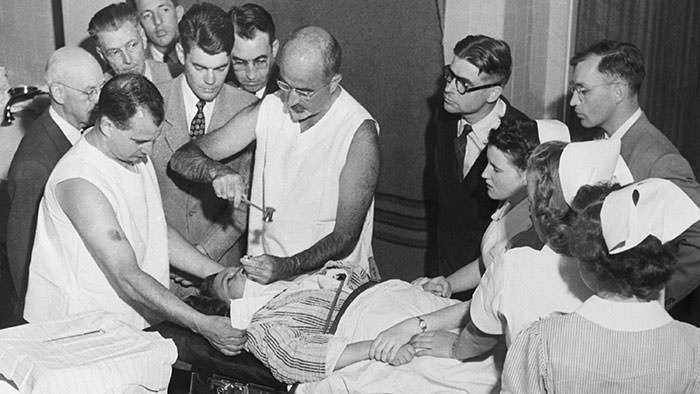
In the early 20th century, when options for treating mental illnesses were limited, a controversial and invasive procedure called lobotomy emerged. The procedure involved severing nerve pathways in the lobes of the brain, with the belief that it could alleviate symptoms of mental disorders. Despite a lack of concrete evidence supporting the effectiveness of lobotomy, it became widely used across the world.
The popularity of lobotomy can be attributed, in part, to active campaigning by its proponents and widespread misinformation in the media. Many people came to view lobotomy as a miracle cure for various mental illnesses, and thousands of patients underwent the procedure in the hope of finding relief from their symptoms.
#16 Malariotherapy
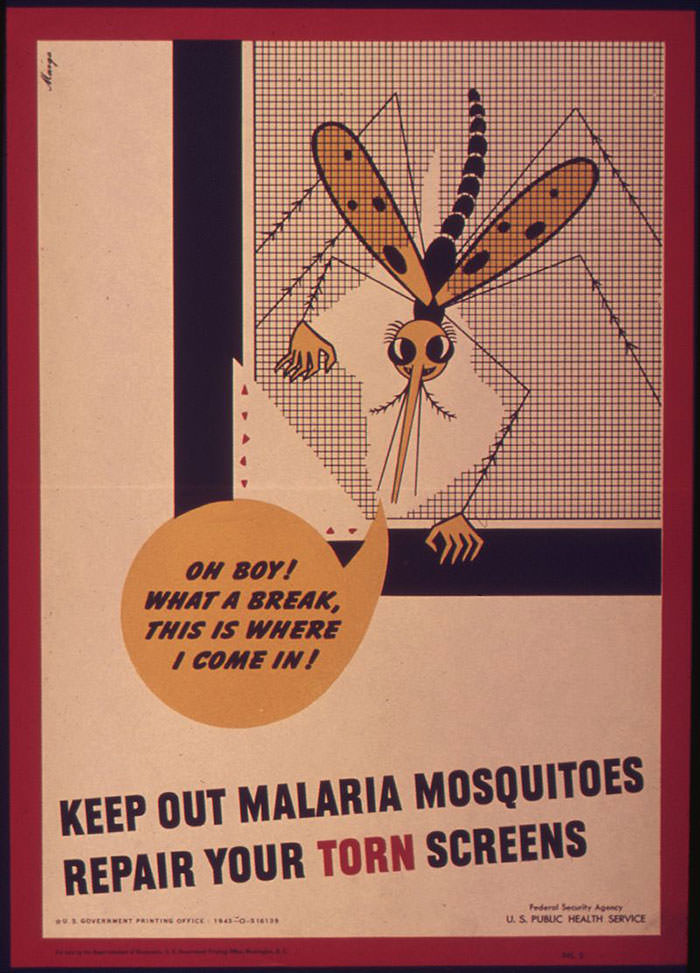
Malariotherapy, a controversial medical treatment developed in the early 20th century, involved intentionally infecting syphilis patients with malaria. The rationale behind this unconventional approach was that the high fevers induced by malaria would be sufficient to kill the temperature-sensitive syphilis bacteria, offering a potential cure for those affected by the disease.
Although the idea of using one deadly disease to treat another seems counterintuitive, malariotherapy did yield positive results for some patients. The high fevers experienced during a malarial infection were sometimes effective in killing the syphilis bacteria and alleviating the symptoms of the disease. However, the risks associated with malariotherapy were significant.
It is estimated that around 15% of the patients treated with malariotherapy died due to complications from the malaria infection. Additionally, those who survived the treatment often had to endure the severe side effects of malaria, including intense fever, chills, and body aches.
#17 Corpse Medicine
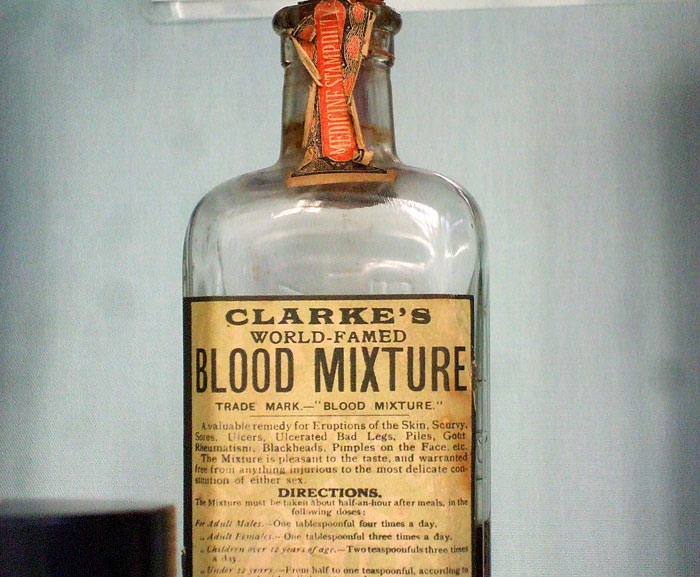
Corpse medicine was a widespread practice for hundreds of years, with its popularity spanning from the Middle Ages up until the 1890s. This unusual approach involved using various human body parts as ingredients in medicinal remedies to treat a wide range of ailments.
Practitioners of corpse medicine utilized a variety of human tissues, including blood, fat, bone, and flesh, for their supposed healing properties. For example, the human liver was believed to be an effective treatment for epilepsy. However, one of the most popular remedies during the 16th and 17th centuries was derived from smuggled Egyptian mummies.
The mummified remains were typically ground into a powder and used as a treatment for a variety of conditions, such as epilepsy, bruising, and hemorrhaging. It was believed that the ancient preservation techniques imbued the mummies with powerful curative properties.
#18 Bloodletting
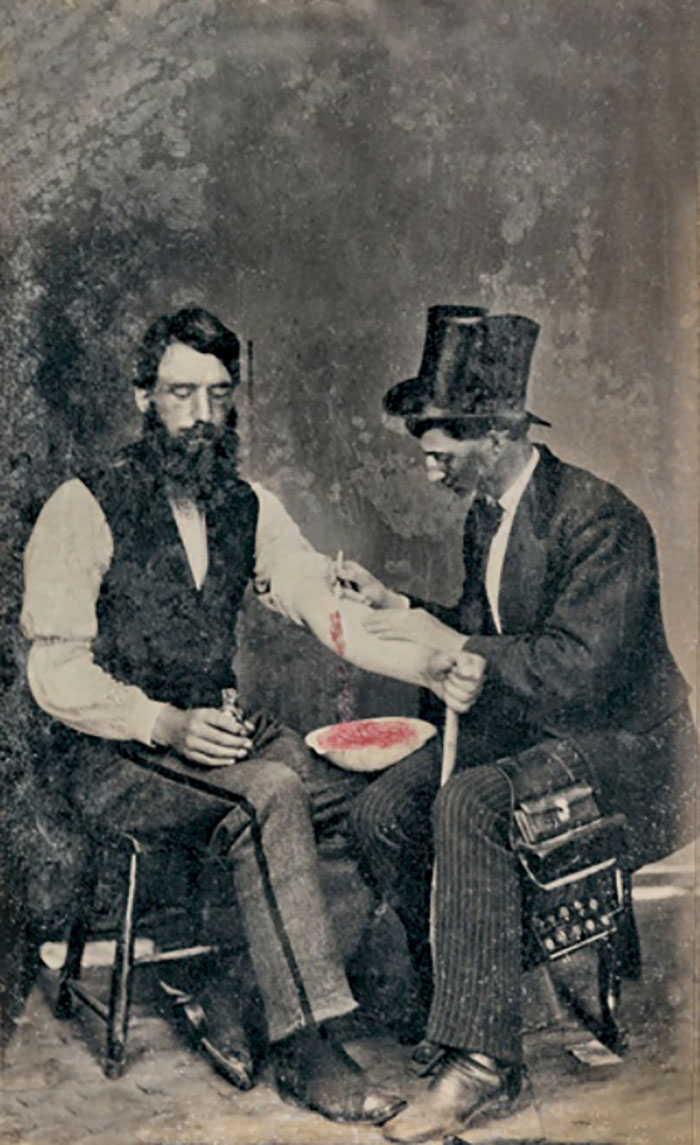
Bloodletting, one of the oldest medical practices, has a history that spans over 3000 years, with roots in ancient Egypt. This procedure gained widespread popularity in medieval Europe, where it was employed as a treatment for various ailments such as smallpox, epilepsy, and the plague. Surprisingly, the practice continued well into the 19th century and can still be found in some limited applications today.
As the 19th century drew to a close, the medical community began to recognize the risks associated with bloodletting and questioned its efficacy as a treatment. Doctors eventually acknowledged that draining a patient's blood could be hazardous and offered few tangible health benefits. Some of the potential risks of bloodletting include cardiac arrest, excessive blood loss, dangerously low blood pressure, and anemia. Moreover, the procedure can also lead to infections due to unsanitary conditions and instrum
#19 Arsenic
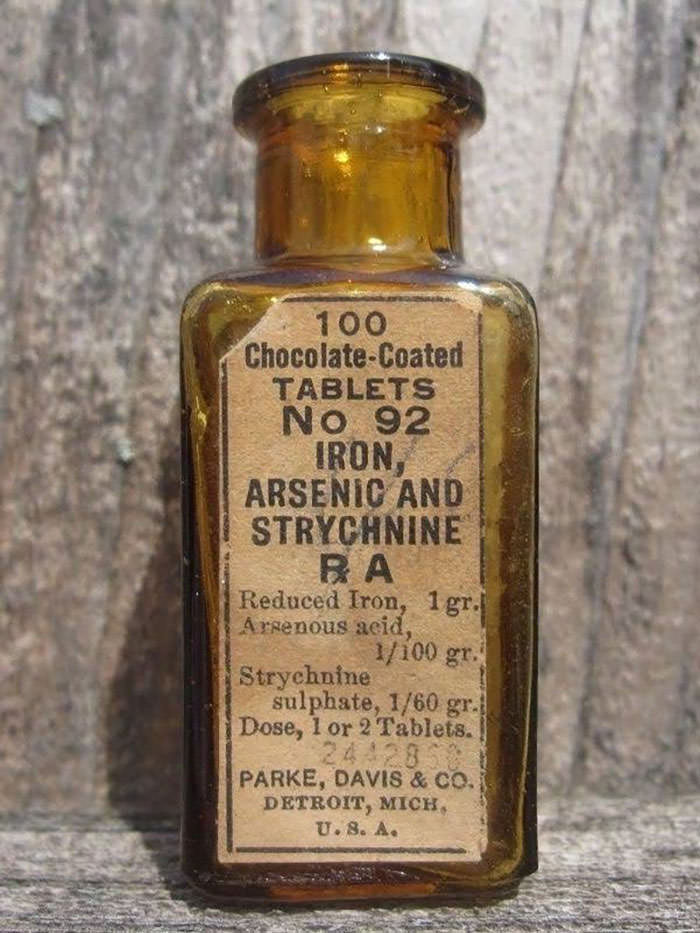
Arsenic, a highly toxic substance, has been used in medical treatments since ancient times. Despite being aware of its toxic properties, medical practitioners continued to use arsenic compounds to treat various diseases well into the 20th century.
Arsenic was incorporated into numerous tinctures, balsams, and tablets, which were prescribed for a range of conditions. Some of the diseases treated with arsenic compounds included trypanosomiasis, also known as "sleeping sickness," and syphilis. In the case of sleeping sickness, arsenic-based drugs like melarsoprol were used until safer alternatives became available.
The use of arsenic in medicine highlights the precarious balance between risk and benefit that was often at play in historical medical treatments. While some patients may have experienced temporary relief from their symptoms, the long-term toxic effects of arsenic exposure often outweighed any potential benefits.
#20 Plombage

Plombage was a medical procedure used between the 1930s and 1950s to treat tuberculosis before effective medications were available. The idea behind the treatment was based on the belief that collapsing a lung affected by tuberculosis would allow it to heal more quickly. To achieve this, physicians would perform plombage, which involved creating a cavity underneath the patient's upper ribs and filling it with various materials, such as Lucite balls, ping pong balls, oils, rubber sheets, paraffin wax, or gauze.
Unfortunately, this treatment carried numerous risks and potential complications. Many patients experienced hemorrhage, infection, and fistulization as a result of the procedure. Fistulization refers to the formation of abnormal openings or connections between two hollow organs, such as the bronchus, aorta, esophagus, and skin.
#21 Hemiglossectomy
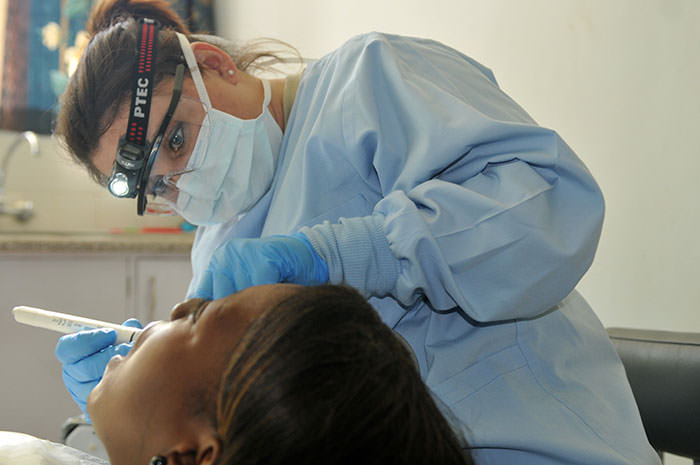
Hemiglossectomy, a procedure that involves the removal of a portion of the tongue, is commonly used today to treat oral cancer. However, in the 18th and 19th centuries, this invasive surgery was employed for a very different purpose: to treat stuttering.
During this time, physicians believed that the tongue was the primary cause of speech impediments like stuttering. As a result, they devised a treatment that involved surgically removing part of the tongue in an attempt to correct the speech issue. Unfortunately, this method proved to be highly ineffective and even dangerous.
Not only did the surgery often fail to improve the patient's speech, but it also posed significant risks. Patients who underwent hemiglossectomy for stuttering faced the potential for severe bleeding, infection, and complications related to anesthesia. In some cases, the procedure could even prove fatal.
#22 Snake Oil
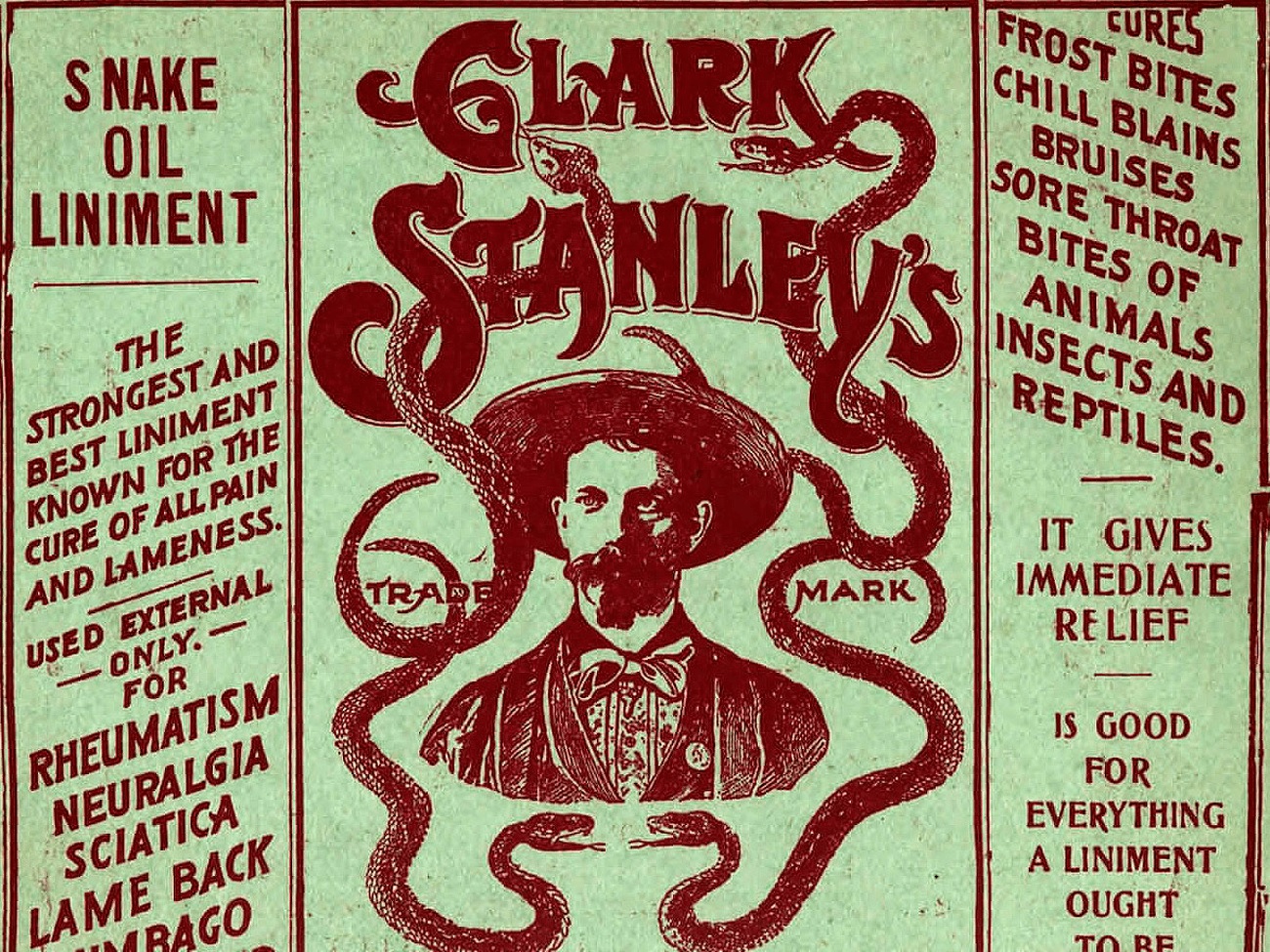
Snake oil was a term used to describe a fraudulent or ineffective cure-all remedy that was popular in the 19th century. The term originated from a practice used by Chinese laborers who used snake oil as a topical ointment to relieve joint pain and inflammation. However, in the United States, unscrupulous salesmen began to market their own versions of snake oil, claiming that it could cure a wide variety of ailments, including everything from headaches to cancer.
The original snake oil was made from the oil extracted from the Chinese water snake, which contains high levels of omega-3 fatty acids that can help reduce inflammation. However, most of the snake oil sold in the United States during the 19th century was made from a variety of other oils and ingredients, such as beef fat, turpentine, and camphor.



A dragon’s blood cure-all is said to be more powerful than even magical healing… In fact, it is quite toxic by itself, but when combined with other things, it can be effective as a medicine. People sometimes hunt ogres and trolls for their blood, believing it will make them stronger. Although some claim to feel stronger after drinking it, it’s not really true.
I love seeing healing practices that use blood, they seem badass and creepy at the same time.
I haven’t played Bloodborne yet but have been meaning to do so! There are many blood-based medicines in my world that are worthless, yet people still throw coins at them like they are miracle cures.
Lengurans believe the lungs are the seat of the mind, since they function as bellows and supply the body with oxygen. Incense and smoking certain plants are therefore used to treat many illnesses. The effects of tobacco smoking on the lungs led to tobacco smoking falling out of style, though herbal smoking continues to be a tradition. The “unclean” of society are relegated to jobs that are harmful to the lungs, such as coal mining.
People have healing powers. The ability to heal oneself is more common than the ability to heal others (the latter implies self-healing as well). As one of the first superheroes, Peter Morris was a self-healer; his power eventually led to his death from cancer. In addition, Keith Folk was able to heal others; he used this power to torture people beyond what most people could handle, and to sterilize sex slaves.
As far as physical treatment is concerned, there is nothing unusual. Magical healing is virtually impossible due to lack of anatomical knowledge and the limitations of the world’s magic. There is one kind of miracle that is regularly performed for medical reasons. There are times in our world when people miraculously recover from diseases or wounds that medical experts say would have killed them. People like these are often described as strong-willed, fighters who don’t give up easily. Soul adepts in my world have discovered that instilling hope into patients’ souls through various means can have a physical effect. In this way, many people have been able to recover from mortal wounds and deadly diseases. Even so, in most seemingly hopeless cases the patients still die, so who can say it works with such anecdotal evidence? In those cases, the patient’s essences advanced to the next plane while experiencing some peace.
In technical terms, potions and medications are considered “alternative” and divine healing through prayer is considered “normal”.